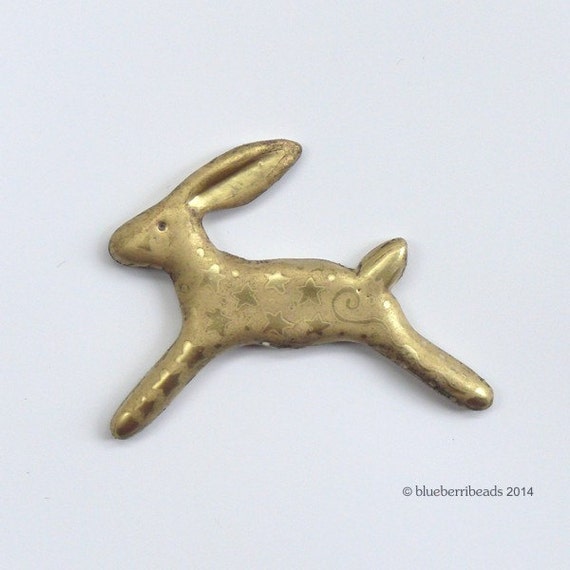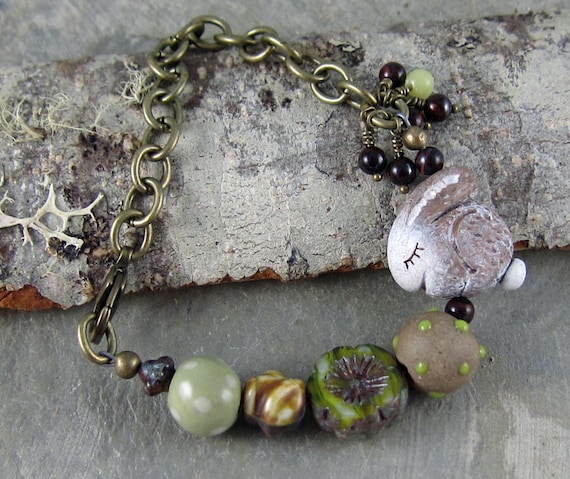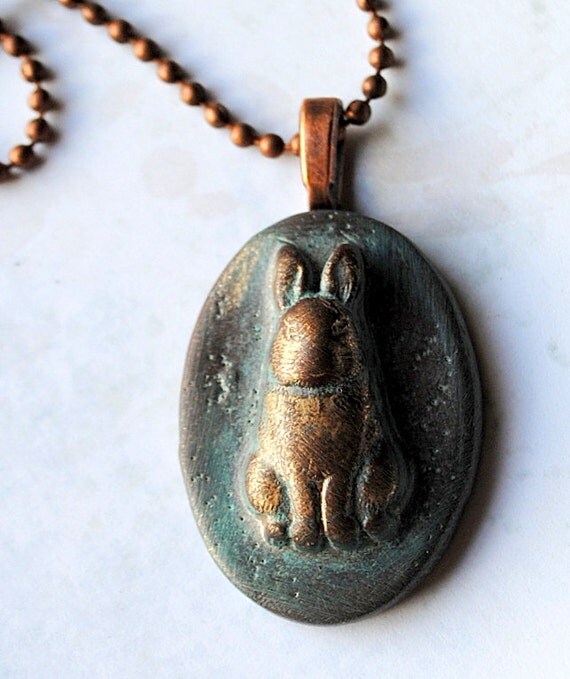Long ago, people noted the links between a woman's cycles that were linked to birth, and the cycles of the moon. Very old records from Asia indicate that the hare was the symbol of the moon. So it followed that the moon and the hare both became the symbol of birth, rebirth and life after death.
Lunar Hare by Jenny Davies-Reazor
Many
ancient cultures held spring festivals to celebrate the renewal of life and to promote
fertility. One of these festivals, in what is now Northern Europe, was in honor
of Eostre or Eastre, the goddess of dawn, spring and fertility. Her symbol was the rabbit, a most fertile animal and a symbol of new life. Many people think that the modern feast of Easter had its roots in the springtime feasts to honor Eastre.
Hare cabochon by Blueberribeads
Little Bunny Rabbit Bead by Tree Wings Studio
The first Easter Bunny legend was documented in the 1500s. By 1680, the first story about a rabbit laying eggs and hiding them in a garden was published. These legends were brought to the United States in the 1700s, when German immigrants settled in Pennsylvania Dutch country and brought their tradition of an egg-laying hare called "Osterhase" or "Oschter Haws." Their children made nests in which this creature could lay its colored eggs.
Sweet Bunny Bracelet by Linda Landig Jewelry
The children
would build their nest in a secluded place in the home, the barn or the garden.
Boys would use their caps and girls their bonnets to make the nests. The use
of elaborate Easter baskets would come later as the
tradition of the Easter bunny spread through out the country.
Faux Bronze Bunny pendant (polymer clay) by Studiotambria
I hope you've found this little bit of history interesting and that you've been inspired by the jewelry and components that I've included here. I put together a Treasury list on Etsy that includes these rabbits and hares, plus many more. You can check it out by clicking here: "Hop To It!"Linda
Linda Landig Jewelry – ArtFire
Linda Landig Jewelry – Etsy







Really interesting! I had no idea.
ReplyDeleteSome cute jewellery. actually I love them.
ReplyDeleteReally interesting post Linda! I didn't know that about the nests!
ReplyDeleteThanks for featuring my hare in your post.
What an awesome look into this tradition!
ReplyDeleteI really loved this post. I had no idea why there was an easter bunny. It's sad how the origin of traditions are forgotten over time.
ReplyDeleteWonderful handmade components and a history lesson to boot!! Great post Linda!
ReplyDeleteGreat history lesson! Love the beads you found.
ReplyDeleteGreat post - I love hearing about the background of a symbol. And the example beads / jewelry are awesome. :)
ReplyDelete